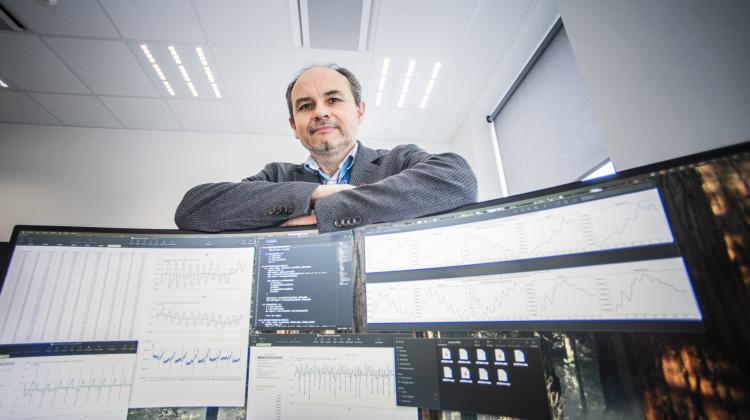Already the ancient Greeks ...
Empedocles was a Greek philosopher living in the 5th century BC. He claimed, as it later turned out - erroneously, that vision relied on our eyes beaming rays of light into the environment, which then bounced off the objects and returned to our eyes. Today, we are also aware of the wave nature of light and that the visible spectrum perceivable is in the range of wavelengths from 380 to 750 nm. This is a very narrow section of electromagnetic radiation but it allows us to see the world in color. More than 120 million retinal photoreceptors in each eye transmit multi-channel signals to the brain which creates spatial images of the environment. Loss of vision deprives people of almost 90% of information about the external world.
...in the Star Trek science fiction movie
Lieutenant Giordi La Forge, a Commander on the starship Enterprise who suffered from congenital blindness used the Visor, a device allowing him to see electromagnetic radiation in a very wide range of wavelengths perfectly, e.g. he could perceive body temperature and states of the human nervous system, e.g. emotions from a distance.
... back to Earth
There are about 280 million blind and visually impaired people on our planet, and over 80 thousand in Poland. One of the pioneers in building systems supporting the mobility of the visually impaired was the Polish ophthalmologist Professor Kazimierz Noiszewski. In 1898, he built the electrophtalm, a device he called the artificial eye, which converted light signals into tactile and auditory stimuli. However, the electrophtalm was technically imperfect and of little use. Today, despite the enormous technological progress and polycentric research, advancement in the development of electronic systems effectively supporting autonomous and safe mobility of the blind and visually impaired in unfamiliar environments has been slow, which shows what a huge technological challenge it has been. The white cane, despite its many shortcomings, has remained the primary aid for spatial orientation and mobility of the blind.
... and at Lodz University of Technology
For over 10 years now, at the TUL's Institute of Electronics research projects and development of electronic personal navigation systems for the blind and visually impaired have been carried out. In the years 2015-2017 the Institute's researchers participated as a technology partner in the Horizon 2020 European grant called "The Sound of Vision". Prototypes of the devices were successfully tested by the industrial partner of the project. They are a long way from the Star Trek's Visor, nevertheless we have continued to work and test our further innovations.
On behalf of my colleagues and me I thank all blind and visually impaired people who have collaborated with us for their invaluable help and participation in tests of our inventions. On 13th of November the world celebrates the International Day of the Blind.




